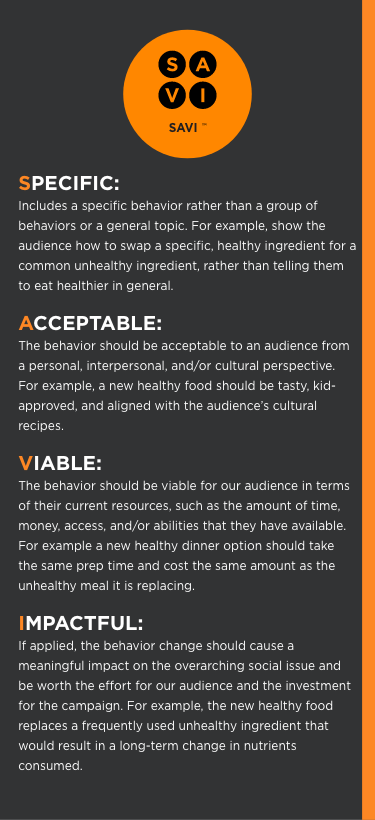
However, when a topic is actually complicated, generalized messages fail to cause significant improvements because they don’t identify realistic behavioral changes. These messages ignore the inescapable barriers that our audiences face when incorporating new behaviors into their lives.













